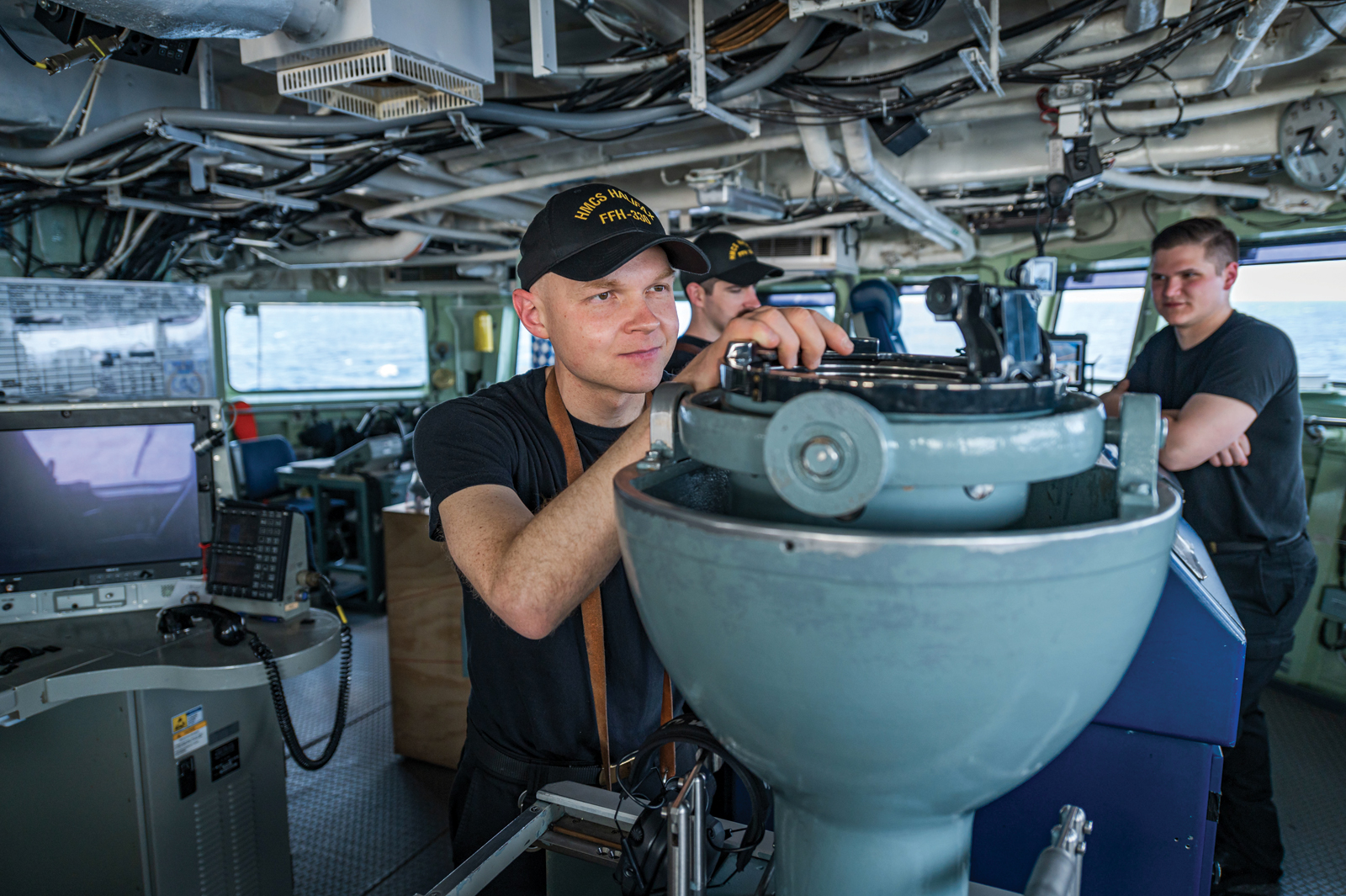RCN Flag Officers assume key leadership roles during NATO exercise – Steadfast Defender
By Lookout on Jun 01, 2021 with Comments 0

Sub-Lieutenant Dmitriy Shulga, a Naval Warfare Officer, takes a navigational bearing with a Polaris on the bridge of Standing NATO Maritime Group One Flagship HMCS Halifax off the coast of Portugal on May 23 during Exercise Steadfast Defender 21. NATO photo by Sailor 1st Class Bryan Underwood, Royal Canadian Navy
DND/RCN
––
Two Royal Canadian Navy (RCN) Flag Officers have assumed key leadership roles for Exercise Steadfast Defender 21, the first in a new series of long-planned NATO exercises to enhance Alliance security.
Twenty Allies from North America and Europe are participing. The exercise will help improve the interoperability of Allied forces and practice military mobility throughout Europe.
The RCN’s Rear-Admiral Steven Waddell, currently on exchange as Vice-Commander of the United States Second Fleet, is the Maritime Component Commander for the exercise and is working alongside Canada’s NATO partners aboard the Blue Ridge-class command and control ship United States Ship Mount Whitney.
Standing NATO Maritime Group One (SNMG1), currently under the command of the RCN’s Commodore Bradley Peats from flagship HMCS Halifax, is participating in the maritime operational and tactical-level live exercise (LIVEX), running from May 20 to 30.
The LIVEX, which is taking place off the coast of Portugal in the Eastern Atlantic, will demonstrate the ability of Allied maritime forces to execute Joint Force Command Norfolk’s mission of protecting strategic lines of communication in the Atlantic.
Steadfast Defender 21 is also the first large test of NATO’s adapted command structure and involves two new commands: one focused on logistics, Joint Support and Enabling Command, based in Germany, and the other focused on the Atlantic, Joint Force Command Norfolk, based in Virginia. It offers the Canadian Armed Forces (CAF) an opportunity to gain understanding of these commands, as well as the new Standing Joint Logistics Support Group.
As a founding NATO member, Canada remains committed to the Alliance and continues to strengthen defence relationships in NATO as well as with European states. The multinational character of the exercise reflects Canada’s commitment to NATO and ally and partner nations on both sides of the Atlantic.
The CAF exercises with NATO to protect Canada and its allies, and to promote global security, both as a capacity-building partner and as a leader.
––––
Filed Under: Top Stories
About the Author:





